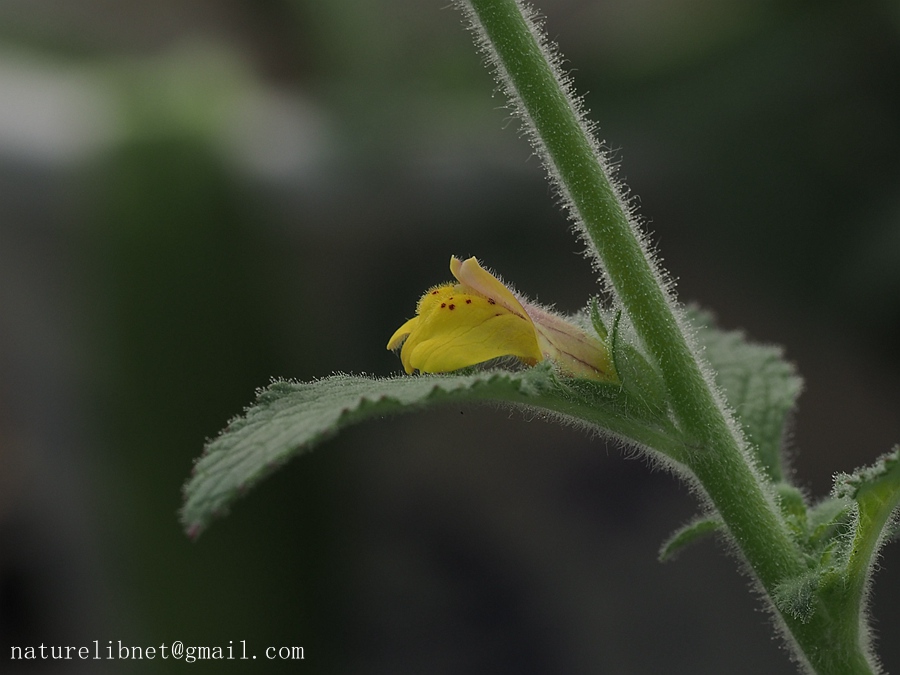- Scientific Name: Lindenbergia philippensis (Cham. & Schltdl.) Benth.
- Ref: Prodr. [A. P. de Candolle] 10: 377 (1846).
- Synonyms: Stemodia philippensis Chamisso & Schlechtendal, Linnaea 3: 5. 1828;
Lindenbergia melvillei S. Moore;
L. philippensis var. ramosissima Bonati.
- Chinese Common Name: 钟萼草 zhong e cao
- Family: Scrophulariaceae, Orobanchaceae
- Genus: Lindenbergia
- Distribution: Dry mountain sides, rocky crevices; 1200-2600 m. Guangdong, Guangxi, Guizhou, Hubei, Hunan, Yunnan [Cambodia, India, Laos, Myanmar, Philippines, Thailand, Vietnam].
- Type: R. Lenormand – 989 (MO/BC:MO-716131/A:92777)
Perennials, to 1 m tall, stout, erect, straight, much branched, glandular hairy. Stems terete. Petiole 6-12 mm; leaf blade ovate to ovate-lanceolate, papery, 2-8 cm, base cuneate, margin serrate, apex acute to acuminate. Inflorescences terminal, spicate-racemose, dense, 6-20 cm; bracts narrowly lanceolate, shorter than calyx. Flowers subsessile. Calyx 5-6 mm, conspicuously 5-veined; lobes subulate-triangular, as long as tube, apex acute. Corolla yellow, outside with purple patches, sparsely hairy; tube ca. 2 X as long as calyx; lower lip long, conspicuously plicate; upper lip apically subtruncate, sometimes emarginate. Anthers long stalked. Style basally and apically hairy. Capsule narrowly ovoid, 5-6 mm, densely brown hirsute apically. Seeds yellow, ca. 0.5 mm, scabrous. Fl. and fr. Nov-Mar. (Flora of China)
